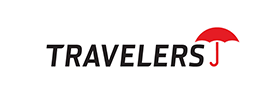The American economy is finally recovering President Joe Biden’s administration wants further stimulate the economy. So he recently signed an executive order aimed at increasing competition among businesses.
They say that corporate consolidation has been accelerating for many years, leaving the majority of industries in the hands of only a few entities. This is the main reason for slow wage growth and rising consumer prices. This latest executive order intends to reverse these effects.
The executive order includes 72 initiatives by more than a dozen federal agencies to help address competition inequality.
Summary from Felisha McDougald, CIC CPRM
Competition is good, for you and for me. In the insurance industry, it ensures that my businesses are not unfairly penalized for losses by other companies in markets they rate in. While loyalty is important in insurance, no Commercial Agent can deny that Actuaries (those that gather data and make rate recommendations) ‘group’ data into buckets that often unfairly price smaller companies (especially those that cannot afford larger deductibles) out of the market. This is like a windfall effect, the carrier charges a higher price to Company x, y, z. Company y, z, get out, because they cannot be profitable. Company X has the staff to modify bids, and charge overages, however they pass that on to the Company requiring the insurance… and so it goes. In short: the more players we have in the game the better.
LABOR MARKET
Currently, nearly half of all private employers make employees sign non-compete agreements, limiting where employees can work during certain periods. Separately, many workplaces require certain licenses to perform specific jobs. The Biden administration believes these current trends are limiting growth.
In the first executive order, the White House encouraged the Federal Trade Commission (FTC) to ban or limit noncompete agreements as well as occupational licensing restrictions. Additionally, the executive order urges the FTC and Department of Justice (DOJ) to strengthen antitrust guidance to prevent employers from collaborating to suppress wages or reduce
HEALTH CARE
The executive order addresses competition in health care in four main areas:
Prescription Drugs
Right now, large drug manufacturers enjoy incredible profits year over year. The White House alleges that this is due to
lack of competition and “pay for delay” tactics, where name-brand drug manufacturers pay generic manufacturers to stay out of the market. Such strategies result in Americans paying 2.5 times more for the same medications as peer countries.
The executive order directs the Food and Drug Administration to work with states and tribes to safely import prescription drugs from Canada, where drugs are less expensive. It also directs the Health and Human Services (HHS) Administration to increase support for generic and biosimilar drugs. Additionally, the order encourages the FTC to ban “pay for delay” and similar agreements.
Hearing Aids
The executive order directs the HHS to consider issuing proposed rules within 120 days for allowing hearing aids to be sold over the counter.
Hospitals
Charge far higher prices than hospitals in markets with more competition.
Hospital price transparency rules and finish implementing bipartisan federal legislation to address surprise hospital billing.
Health Insurance
The executive order directs the HHS to standardize plan options in the National Health Insurance Marketplace so people can comparison shop more easily.
TECHNOLOGY
The executive order addresses competition in the technology sector in four main areas:
Purchasing Would-be Competitors
Greater scrutiny of mergers, especially by dominant internet platforms, with particular attention to the acquisition of nascent competitors, serial mergers, the accumulation of data, competition by ‘free’ products, and the effect on user privacy.
Gathering Personal Information
The current business model of many large tech platforms is the accumulation of individuals’ personal information. The Biden administration is concerned about the breadth of this collected information— information is sometimes compromised through security breaches.
The executive order encourages the FTC to establish rules on surveillance and the accumulation of data.
Unfairly Competing With Small Businesses
Big tech platforms have incredible control over the online marketplace. Often, small businesses rely on these platforms to reach their customers. However, large platforms will sometimes examine the most popular products sold by these small businesses, then replicate them and promote them more prominently on their websites.
FTC to establish rules barring unfair methods of competition on internet marketplaces.
TRANSPORTATION
The transportation sector is dominated by a handful of corporations. The executive order addresses competition as it relates to:
Airlines
There are four commercial airlines that control two-thirds of the industry. This contributes to high prices for consumers, such as with baggage and cancellation fees. The Biden administration points out that these increases often come in lockstep, meaning the top airlines tend to raise them at the same time. These simultaneous increases demonstrate “a lack of meaningful competitive pressure,” according to the White House. Notably, despite this industry consolidation, airlines were late delivering 2.3 million checked bags in 2019, according to the Department of Transportation (DOT).
The executive order directs the DOT to consider issuing clear rules requiring the refund of fees when baggage is delayed or when service isn’t actually provided, such as when the plane’s Wi-Fi or in-flight entertainment system is broken. Additionally, the order directs the DOT to consider issuing rules that require baggage, change and cancellation fees to be clearly disclosed to the customer.
Rail
The rail industry, like airliners, is heavily consolidated, going from 33 “Class I” freight railroads in 1980 to only seven today. Moreover, four rail companies dominate their respective geographic regions of the United States. These companies can prioritize their own freight traffic, sometimes to the detriment of passenger trains and other companies’ freight cars.
The executive order encourages the Surface Transportation Board to require railroad track owners to provide rights of way to passenger rails and strengthen their obligations to treat other freight companies fairly.
Shipping
The industry’s 10 largest shipping companies control more than 80% of the global market, leaving manufacturers who need to ship goods “at these large foreign companies’ mercy,” according to the Biden administration. These companies are allowed to charge exorbitant fees for when their shipments are sitting, waiting to be loaded, or unloaded.
The executive order encourages the Federal Maritime Commission to ensure vigorous enforcement against shippers charging American exporters exorbitant charges.
AGRICULTURE
Agriculture consolidation is another concern for the Biden administration. Four companies now control most of the work’s seeds, and seed prices have increased as much as 30% annually. This consolidation also limits to whom small farmers can sell their goods, meaning lower price sharing for these farmers. Summarily, farmers are getting less for their goods, and consumers are paying more for them, all while large corporations are reaping profits.
current labeling rules allow for shady business practices that can harm consumers. For instance, foreign beef manufacturers may use the label “Product of USA” merely if the product was processed here. In fact, that beef may not be from the United States—the White House notes that most grass-fed beef labeled “Product of USA” is actually imported.
The executive order aims to combat these practices.
INTERNET SERVICE
The executive order addresses issues in the internet service sector in four primary areas:
Lack of Competition
According to the White House, more than 200 million U.S. residents live in an area with only one or two reliable high-speed internet providers, leading to prices as much as five times higher in these markets than in markets with more options. This situation is sometimes exacerbated when landlords enter exclusivity deals with internet service providers (ISPs), effectively blocking broadband internet expansion for an area.
The executive order encourages the Federal Communication Commission (FCC) to prevent ISPs from making deals with landlords that limit tenants’ choices.
Lack of Price Transparency
High Termination Fees
Indiscriminate Service Slowdowns
BANKING AND CONSUMER FINANCE
In the last four decades, 70% of U.S. banks have been lost to closures, mergers, or acquisitions
SUMMARY
The executive order broadly addresses competition inequalities across market sectors. These proposed initiatives have the potential to help individuals and small businesses alike. However, it remains to be seen how all of these initiatives will play out, as executive orders are essentially a directive to federal agencies to revise their regulations. In other words, some of the proposals may never come to fruition, and those that do may take months to implement. At the very least, this executive order and its initiatives indicate the position of the Biden administration—signaling that it may pursue these agenda items through alternative means, if necessary.
Employers should continue to monitor exactly how the executive order plays out. In the meantime, employers can read the full overview of the order on www.whitehouse.gov.


















